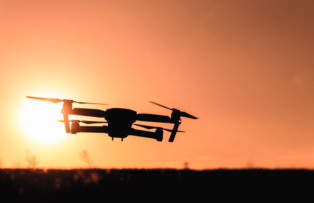Hospitals in Germany could rapidly receive test results and supplies from other medical facilities thanks to Deutsche Telekom. The German telecom is currently testing an LTE-based campus network that powers off the spectrum from its public network. The project is being set up as a private circuit, reports Enterprise IOT Insights, for the exclusive use of the contracted parties. Initial testing is being conducted in the North Rhine-Westphalia section of the country, in the university centered city of Siegen.
The drone shuttle flights are being tested by the city itself, three local hospitals, and an anonymous drone manufacturer. The drone commands are routed through a “control room specialist” who coordinates with the drone pilots. Addressing concerns about drone visibility, Hagen Rickmann, a spokesman for Deutsche Telekom, said: “To ensure that pilots are allowed to fly the drones outside of their visual range, the aircraft transmit live images from a built-in camera to the control center. This requires a high-performance network and low latency. A particularly fast reaction time of the communications network is essential for delay-free control.”
Great attention is being paid to safe flying and collision avoidance, which is subject to strict EU regulations. The drone flyers communicate on a secure LTE connection at a flight altitude of 30 meters, or just shy of 100 feet. Established flight paths from one hospital to the other require the drones to fly approximately one and half miles over an urban landscape. Siegen is already a participant in the KODRONA research project, commissioned by the German Ministry of Transport and Digital Infrastructure (BMVI), which is also overseeing the medical drone testing.
Dominik Eichbaum, City of Siegen Project Manager, said: “We have the opportunity here to work with new technologies and put them to work for people. This also includes setting up the mobile communications infrastructure that supports the entire process. The drone pilots must control the aircraft via a secure mobile phone network and the drone control center must be fail-safe connected to it.”
Deutsche Telekom stated that “Public LTE networks [will] form the basis for data exchange,” adding, “This will enable reliable data transmission even during temporary load peaks. This means that images and control commands are transmitted even faster and support the safe flight of the drones. The campus network is implemented using existing antennas.”





Reader Interactions